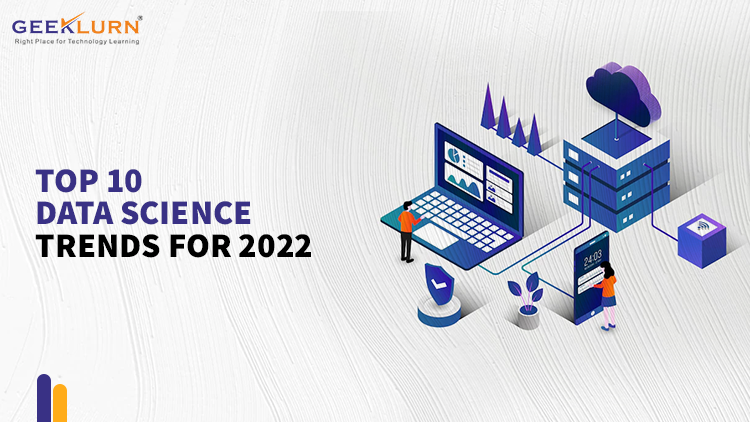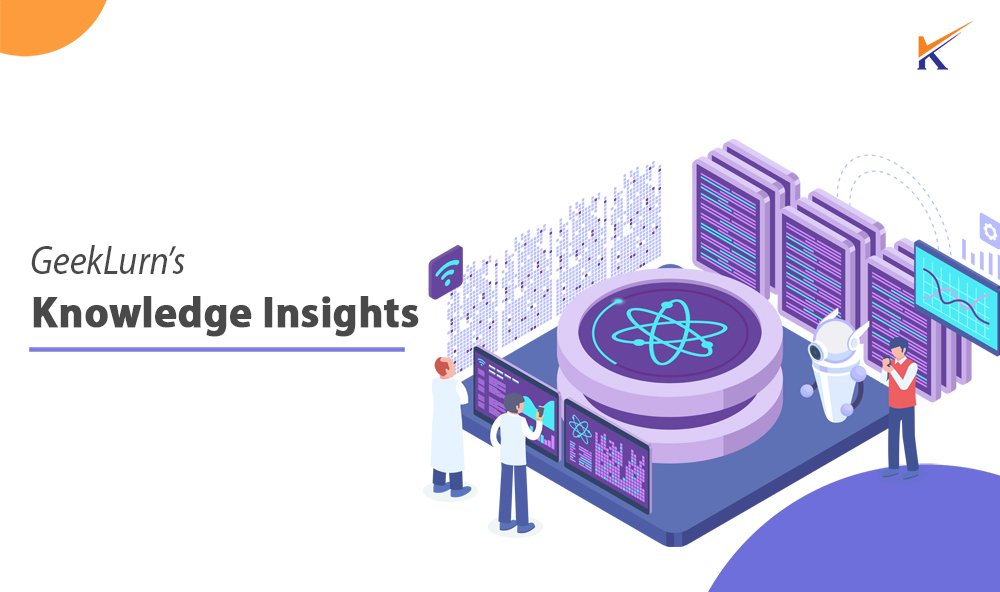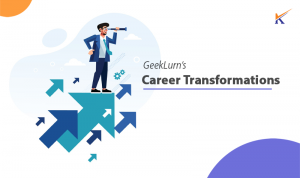Data science works with structured and unstructured data. Data scientists use modern tools like SAS, Tableau, BigML, MATLAB, D3 and Excel to extract meaningful insights and apply them for business strategy and decisions across a wide range of industries. The field combines domain expertise, maths and statistics and programming languages to analyse, prepare, explore and visualise data.
No wonder data science/analytics jobs saw a 30.1% increase in April 2022, compared to April 2021. The advertised jobs for professionals in the salary bracket of above ₹50 lakhs also witnessed a significant rise in comparison to 2021. This number increased by about 20 times to 5,472 in 2022 from 276 in 2021.
You can learn about current hot topics in data science via the Data Science Architect Program offered by GeekLurn. It is a 24-month comprehensive course with Supervised and Unsupervised learning, time series analysis, sequences and file operations, probability and statistics and data manipulation. Real-time projects, certificates, guidance from corporate specialists, boost camps and peer networking make it an excellent opportunity to be job-ready for the data science field.
Knowing the latest data science trends will further help you stay updated and excel in your field. Here’s a look.
Table of Contents
1. Using Augmented Analysis
AA enables technologies like Artificial Intelligence (AI) and Machine Learning (ML) to help with data preparation, insight explanation and insight generation. For instance, Coca-Cola mixed AI-driven image recognition and augmented analysis to figure out how its products are being shown on social media. Using AA can ensure that the process of extracting data is less time-consuming, and the results are more accurate.
2. Cloud Automation
This is an important data science trend that can be achieved using AI and ML. Tools and processes are used to reduce manual effort, including in configuring, provisioning and managing hybrid, public and private cloud environments. The most basic purpose is to complete repetitive tasks effectively to produce the desired results. A few examples of automation services from public cloud providers include Google Cloud Composer and IBM Cloud Orchestrator.
| Cloud Automation | Cloud Orchestration |
| Using cloud management tools to complete projects without manual support. | Ticking off goals in the cloud infrastructure by organising automated tasks. |
3. Growing Demand for Actionable Data
Actionable information offers clarity and eases the task of decision makers since the main goal of any business intelligence tool is to turn the unfiltered raw data into “actionable data” that drives insight. The end result is mainly timely, accurate and easy-to-understand. The demand for actionable data is only expected to grow, given its value for business decisions.
4. Deepfake Video and Audio
Deepfake technology is used to create videos, audio files and images using deep learning models in an artificial way. It can be widely used to fake emotions, replace faces and manipulate speech in the coming years. Deepfake is a synthetic media that is built via ML algorithms. The top example is placing actress Lynda Carter from the 70s classic Wonder Woman into a reimagined costume of Gal Gadot’s big-screen TV show with great results.
5. Big Data in IoT
This is one of the top trends in data science that is highly beneficial for companies. Mixing Big Data with IoT can help find latent data correlations, examine data, reveal new information and detect unseen data patterns. All this will be useful for e-health systems, the transportation industry, manufacturing companies, weather forecasts and the energy revolution. It helps to get an idea of client behaviour to enhance business performance.
| Big Data Tools and Characteristics | Hadoop | HPCC | Grid Grain |
| Volume | 250PB | Many Petabytes | Terabytes to Petabytes |
| Variety | Semi-structured, structured and unstructured | Data-centric and query processing | Memory Processing |
| Velocity | Processing, fast collection and consumption | More than Hadoop | High Speed and Fast Processing |
6. Edge Intelligence
This is a combination of edge computing and AI. It will help maximise business efficiency by reducing the likelihood of data breaches or revealing sensitive information to a third party. Now, businesses can be self-reliant instead of depending on faulty network connections. This can also help save money in the long run and boost revenue. Organisations are already using edge intelligence to create workspaces, retail experiences and factory floors. Buildings and cities also use edge nodes that measure and sense specific data to make core decisions.
7. Human-Centred Data Science
This is the latest in data science trend and the next big thing. This is because data science products are not always tangible. So, human-centred designs must be implemented to gain valuable insights and improve user experience with data science products. It is vital since human psychology and various emotions are the driving factors of almost everything in the world. In short, the technology will place people at the centre of innovation and design for measurable results.
8. Blockchain
Data scientists will widely use blockchain technology to ensure data authenticity and validity. It will also help decentralised ledgers to make it easy to handle big data, track the origin of data to make it simple to validate information, and help data scientists run analytics from the decentralised structure directly from their individual devices.
9. Quantum Computing
The main aim of quantum computing is to integrate data for quick analysis. Data scientists are eager to learn it to be able to study quantum machine learning. This combines the theory of information, computer science and quantum physics for computations and storing data. However, it is still in its nascent stages and requires fine-tuning before becoming an integral part of businesses.
10. End-to-End AI Solutions
AI helps extract patterns and insights from large data sets. These insights are then analysed to predict outcomes and assist in complex decision-making. AI can be used to recognize objects and images, and similar elements in raw and unfiltered data. Top companies like Unilever have already gained valuable insights from chunks of data and have automated critical monitoring tasks. The machine learning component can further help AI enable machines to adjust to the “knowledge,” based on the input. This is used in processing clinical data, social media management and financial planning.
These trends are the cornerstones of helping improve consumer experiences, boost revenue and ultimately grow your business. Adopting data-driven models can help business leaders make better decisions based on relevant analytical insights.






